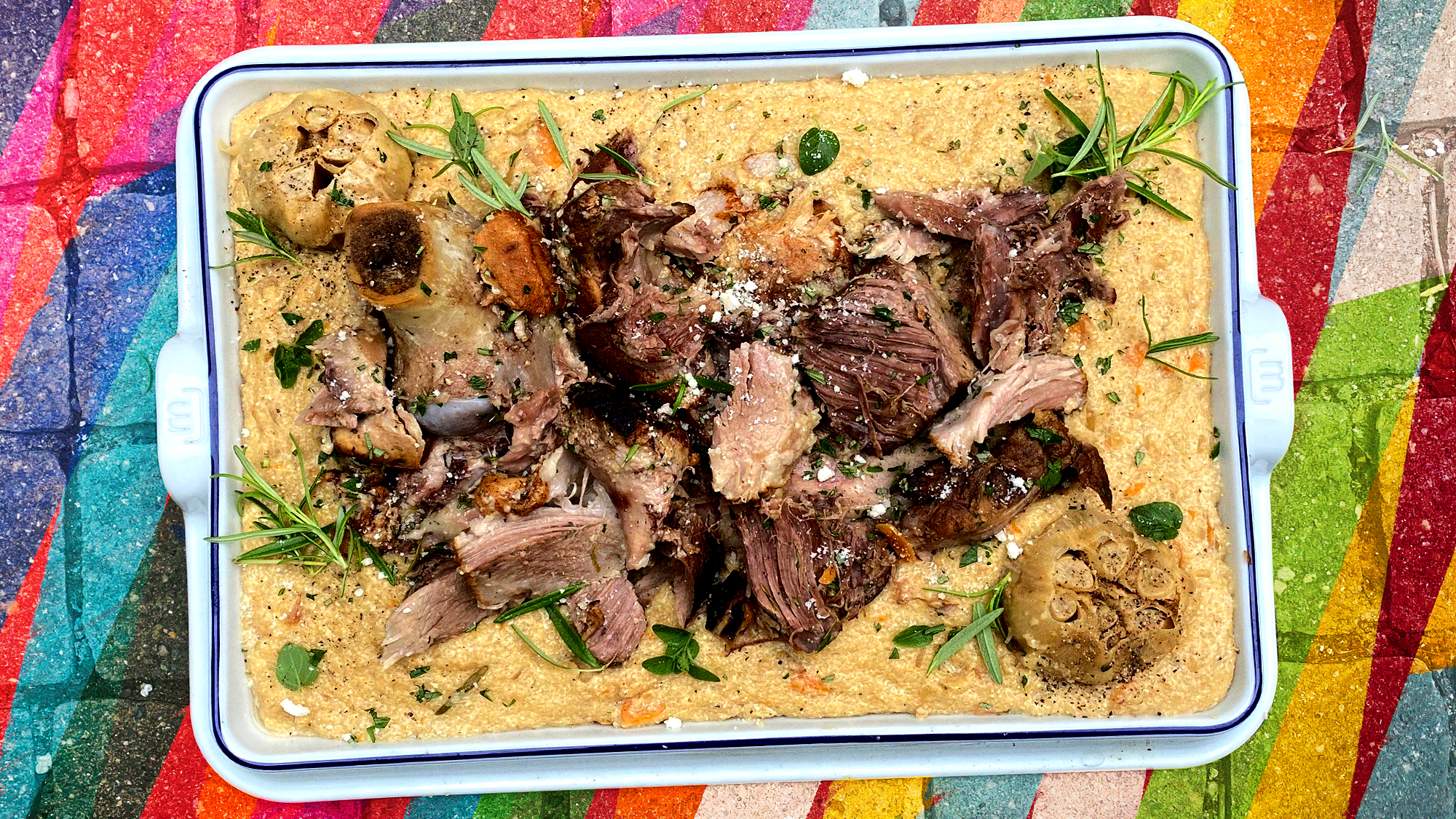This Buttermilk-Braised Pork Shoulder Practically Cooks Itself
Kick back with this low-effort but highly impressive recipe.
As I've mentioned several times, I really, really, really do not like entertaining, because when you are a former chef/current food writer, people have unreasonably high expectations that I have no desire to deliver upon. I don't go to other peoples' houses and expect them to do their jobs in their free time! If a doctor invited you over, would you expect them to look at your dubious moles before dinner? Of course you wouldn't, and that's why doctors don't need to get stressed out before dinner parties.
I, on the other hand, have a sterling reputation as a lifestyle influencer to uphold, when all I really want to do is sit on the couch and do anything but cook. That's why when I entertain, I almost always make something braised, which looks impressive, tastes amazing, and almost of the the magic happens while my ass is parked firmly on the couch where it belongs. This recipe in particular has knocked off many a sock that has visited my house, with every guest walking out the door in awe of my awesome powers. Now those powers are yours, too.
Buttermilk-Braised Pork Shoulder with Polenta
- 3.5-lb. pork shoulder
- 1 large or 2 small onions
- 1 medium carrot
- 3 bay leaves
- 3-4 sprigs sturdy herbs, like thyme, rosemary, oregano, or tarragon (your choice)
- 1 cup white wine
- 2 cups buttermilk, or proper substitution
- 3 cups chicken stock
- 1/2 tsp. freshly grated nutmeg
- 1/2 tsp. freshly ground black pepper
- 2 or more heads garlic (follow your heart)
- 1 cup instant polenta (if you can't find this, use finely ground grits)
- 1/3 cup Pecorino Romano, or any other strong, firm grating cheese you're fond of*
- 2/3 cup ricotta*
- Chopped fresh herbs, for garnish
- Kosher salt
- Grapeseed or other high-temp neutral-flavored oil, for cooking
*NOTE: You're allowed to use as much cheese as you want—I wouldn't dream of stopping you from following your cheese dreams. Start with these measurements, but keep some standby cheese close at hand.
Before you begin: Turn on your exhaust fan, open your windows, maybe plug in a high-powered portable fan in your kitchen. You are going to be browning meat, which could set off your smoke detector, and you don't want to be scrambling around trying to ventilate your house while there's something on the stove. Taking care of this before you start cooking will make your life a lot easier.
Coat the bottom of a Dutch oven with a thin layer of cooking oil, then set over high heat. While the pot is preheating, use a paper or clean kitchen towel to blot the pork shoulder dry, generously seasoning it on all sides with kosher salt. When the oil starts to shimmer, carefully lower the pork shoulder into the pot, fat side down. Fight every urge you have to poke and prod it, and leave it alone! You don't your pork to be "kinda" brown—you want it to be brown brown, and it can only get to where it needs to be with time.
Let the pork sear undisturbed for about 4-5 minutes, then give it a little jiggle to see if it's stuck to the pan. If it is, leave it be for another minute, then check again; when the pork is properly browned it will release itself from the pan, so be patient and follow its lead. Once it's ready, rotate the pork shoulder onto its side to brown; repeat until every side is a beautiful mahogany brown, then move to a plate and set aside.
Reduce the heat to medium high. Use a food processor to chop the onions and carrot as finely as you manage, then add to the pot with a big pinch of salt, and some olive oil or butter if the pan looks a bit too dry. Cook, stirring occasionally, until the vegetables are golden, about 7-10 minutes. While this is happening, begin preheating your oven to 300 degrees Fahrenheit.
Once the vegetables are golden, add the fresh herbs and bay leaves and cook for another minute or so until fragrant. Add the wine, using your spoon to scrape up any tasty brown bits at the bottom of the pan, then stir in the buttermilk, chicken stock, nutmeg, and pepper. Bring to a simmer, then turn off the heat.
Return the browned pork shoulder to the pot, along with any juices it left on the plate. Roll the garlic bulbs between your hands to remove any dried-up layers of the peel, then use a serrated knife to cut a thin piece off the top of each bulb. Arrange the garlic bulbs around the pork roast, cut side up, then put the lid on the Dutch oven and slide it into the oven for three hours. After that, take the lid off the Dutch oven, flip the pork over, and continue braising with the lid off for another hour or so, until the pork easily falls apart when you poke at it with a fork.
Return the Dutch oven to the stove (do not turn it on), carefully remove the pork and garlic bulbs to a platter, and use tongs to pick out and discard the herbs. Stir in the polenta or grits, cover the pot, and let sit undisturbed for about ten minutes. Stir in the cheese and taste for seasoning, adjusting as you see fit. Dish up into bowls, top with pork and fresh herbs, and serve the braised garlic heads on the side.
